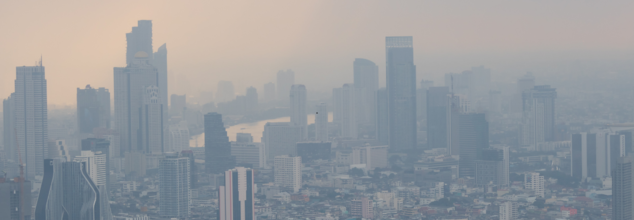- Health Conditions A-Z
- Health & Wellness
- Nutrition
- Fitness
- Health News
- Ayurveda
- Videos
- Medicine A-Z
- Parenting
- Web Stories
WHO Issues Recommendations To Fight RSV In Babies- How Parents Can Protect Their Newborns

Credits: Canva
The World Health Organization (WHO) has issued its first-ever immunization recommendations against Respiratory Syncytial Virus (RSV) — a common but potentially deadly respiratory infection that disproportionately affects newborns and young children. With RSV accounting for nearly 100,000 deaths and over 3.6 million hospitalizations annually among children under five, these new guidelines come as a much-needed global health intervention, especially in low- and middle-income countries where access to oxygen and hydration remains limited.
As international attention shifts toward this preventable yet dangerous illness, WHO’s new recommendations bring renewed hope for parents and caregivers — offering medically backed, preventive tools that could significantly reduce RSV-related hospitalizations and infant mortality worldwide.
Though RSV may mimic the common cold in many cases, its effects in infants can be devastating. The virus is highly contagious and particularly dangerous for babies under six months, especially those born prematurely or with weakened immune systems. What begins as a mild cough or runny nose can escalate to pneumonia or bronchiolitis, requiring urgent hospitalization.
Dr. Kate O’Brien, Director of Immunization, Vaccines, and Biologicals at WHO, explains, “RSV is an incredibly infectious virus that infects people of all ages, but is especially harmful to infants, particularly those born premature, when they are most vulnerable to severe disease.”
Despite its massive global impact, RSV has been largely underprioritized in global health discussions — until now.
WHO’s First Global Immunization Guidance on RSV
In a new and landmark position paper released on May 30, 2025, WHO introduced its first comprehensive immunization guidance to protect infants from RSV. The document outlines two key immunization products:
- RSVpreF Maternal Vaccine
- Nirsevimab Monoclonal Antibody Injection
These immunizations were recommended for global use by the Strategic Advisory Group of Experts on Immunization (SAGE) in September 2024. The maternal vaccine also received WHO prequalification in March 2025 — a move that allows UN agencies and global health funders to begin procurement and deployment across nations.
This scientific breakthrough represents more than just a pharmaceutical advance. It marks a strategic turning point in pediatric health — a chance to proactively prevent rather than react to one of the leading causes of infant respiratory distress and death.
What is Maternal Immunization?
The RSVpreF maternal vaccine is designed for administration during the third trimester of pregnancy, ideally from the 28th week onwards. Administered during routine antenatal check-ups, the vaccine prompts the mother’s immune system to produce RSV-specific antibodies, which are then transferred to the fetus through the placenta.
This passive immunity equips the newborn with a layer of defense right from birth, a critical window of vulnerability when babies are most at risk of severe RSV outcomes.
Maternal immunization is especially beneficial in countries where healthcare access is limited post-delivery, offering early protection before the baby can be brought to pediatric check-ups or immunization visits.
How Does Monoclonal Antibody Protection Works?
Nirsevimab, the second recommended intervention, is a monoclonal antibody administered as a single injection shortly after birth or before hospital discharge. For infants not vaccinated at birth, the antibody can be administered during the first health check-up or just before RSV season begins — especially relevant in regions where RSV follows seasonal patterns.
Unlike traditional vaccines that train the body to build its own immune response, monoclonal antibodies provide immediate protection. A single dose can protect infants for at least five months — long enough to cover an entire RSV season.
WHO emphasizes that the greatest benefit will be seen in babies under six months of age, though infants up to 12 months may also derive protective benefits.
According to WHO, 97% of RSV-related infant deaths occur in low- and middle-income countries — largely due to a lack of timely medical care like oxygen therapy or intravenous hydration. The rollout of these preventive tools offers these regions an unprecedented opportunity to fight RSV on the frontlines.
These immunization products can also significantly reduce hospital burden in high-income countries, freeing up pediatric intensive care units (ICUs) and reducing parental anxiety during RSV season.
The WHO’s position paper is not only a scientific guide — it's a strategic blueprint for governments, health ministries, and funding agencies to incorporate RSV prevention into national immunization programs.
What Parents Can Do to Protect Their Newborns From RSV?
While global immunization strategies are being rolled out, individual parents still play a crucial role in protecting their newborns from RSV. Here's how:
1. Ask About Maternal Vaccination During Pregnancy
If you’re pregnant, speak with your healthcare provider about receiving the RSVpreF vaccine during your third trimester. It can be safely administered as part of your regular antenatal care, and offers vital early protection to your newborn.
2. Ensure Timely Infant Immunization
If the monoclonal antibody nirsevimab is available in your country, ensure your baby receives the injection either at birth or during their first pediatric visit. In areas with seasonal RSV peaks, schedule the dose ahead of the expected surge.
3. Limit Infant Exposure During RSV Season
Avoid crowded public places during RSV season, especially with newborns. RSV spreads through respiratory droplets and contaminated surfaces, making indoor public gatherings a high-risk environment.
4. Practice Hand Hygiene and Clean Surfaces
Ensure everyone who comes into contact with your baby washes their hands thoroughly. Disinfect frequently touched surfaces — RSV can survive on hard surfaces for hours.
5. Watch for Warning Signs
If your baby shows signs of difficulty breathing, rapid breathing, persistent cough, or a bluish tint around the lips or fingernails, seek immediate medical attention. RSV can escalate quickly in infants.
With WHO’s endorsement of two powerful preventive options, RSV no longer needs to be a silent killer. The combination of maternal vaccination and infant monoclonal antibodies brings renewed hope to millions of parents — especially those in under-resourced areas — who’ve long been without any effective preventive tools.
As Dr. O’Brien puts it, “The WHO-recommended RSV immunization products can transform the fight against severe RSV disease, dramatically reduce hospitalizations, and deaths, ultimately saving many infant lives globally.”
Is It The Next Pandemic? New COVID-19 Like Virus From China Raises Global Health Concerns

Credits: Canva
A new strain of coronavirus discovered in China, known as HKU5-CoV-2, could be only a few mutations away from triggering the next deadly pandemic, say American scientists. The virus was identified by researchers at Washington State University (WSU). The researchers have said that it shares close genetic similarities with Middle East Respiratory Syndrome (MERS)—a highly lethal virus that kills nearly a third of those it infects. The findings have raised serious concern in the global scientific community.
A Close Cousin of MERS
MERS, which emerged in 2012 and has caused sporadic outbreaks primarily in the Arabian Peninsula, is known for its severe respiratory symptoms and high mortality rate. HKU5-CoV-2, the new virus under scrutiny, belongs to the merbecovirus family—a group of viruses that includes MERS. While not yet known to infect humans, scientists warn that a minor genetic mutation could allow it to do so, raising the possibility of another global health emergency similar to COVID-19.
“This virus may be only a small step away from being able to spill over into humans,” said Professor Michael Letko, a virologist at WSU and co-lead author of the study.
What the Study Found
The study focused on how HKU5-CoV-2 interacts with human cells. Originally found in bats, this virus was identified by Chinese scientists from the same lab some speculate may have been linked to the origins of COVID-19. In the new study, WSU researchers examined the virus's ability to bind to human ACE2 receptors—proteins located in the nose, mouth, and throat that serve as entry points for coronaviruses.
Using advanced cryo-electron microscopy, researchers captured detailed images of the virus's spike protein, revealing that key segments of the spike often remain “closed.” This closed structure typically makes infection harder—but not impossible.
The team observed that while human cells generally resist infection from HKU5-CoV-2, the virus could latch onto human ACE2 receptors if specific mutations occur. These mutations could enable the virus to enter human cells more effectively, increasing its potential to cause disease.
Risks from Intermediate Animal Hosts
Another concern is the possibility of the virus mutating in intermediate animal hosts, such as mink or civets, before jumping to humans. Such transmission chains have been seen in other coronavirus outbreaks, including both SARS and MERS. If HKU5-CoV-2 were to infect these animals, it might gain the ability to infect humans more efficiently, scientists warn.
“Viruses that are already this close to MERS in structure and function are definitely worth monitoring,” Letko emphasized.
Lineage 2 and Immediate Threats
Earlier in 2025, researchers in Wuhan reported that one strain of HKU5—Lineage 2—already shows the ability to bind to human ACE2 receptors without further mutation. This suggests that some forms of the virus may already be equipped to infect humans.
Building on that discovery, the WSU team expanded their research to look at the entire merbecovirus family. Their findings indicate that several other strains, not just Lineage 2, may only require minimal changes to become capable of infecting humans.
Vigilance Needed
As the world continues to recover from the COVID-19 pandemic, scientists stress the importance of ongoing surveillance and pre-emptive research into emerging viruses like HKU5-CoV-2. Even if they cannot yet infect humans, understanding their structure and behavior is crucial for early intervention.
"The lesson from COVID-19 is clear—we cannot afford to ignore even small viral threats," Letko concluded.
Anthrax Outbreak at Thai Tourist Hotspot: 1 Dead, 4 Hospitalized

Credits: Canva
An anthrax outbreak has hit Thailand's top tourist areas and has killed man, while four have been hospitalized, confirmed health officials.
As per the authorities, they are now racing against the time to trace the source of this dangerous livestock disease, which has a highly infectious bacterial infection.
What Is Anthrax?
As per the Centers for Disease Control and Prevention (CDC), anthrax is a serious disease usually caused by Bacillus anthracis bacteria. The bacteria is found in soil around the world and commonly affect livestock and wild animals. People who usually get sick with anthrax may have come in contact with infected animals or contaminated animal products.
People can breathe in anthrax spores, eat food or drink water contaminated with spores or get spores in a cut or scrape in the skin.
What Is Happening In Thailand?
According to Thai authorities, the 53-year-old victim from Mukdahan, near the Laos border, died after showing symptoms consistent with anthrax. He developed a dark lesion on his hand just days after slaughtering a cow last month. Soon after, he experienced swollen lymph nodes, dizziness, and seizures. Although he sought treatment at a local hospital, he died before doctors could intervene effectively. Laboratory tests later confirmed that he had contracted anthrax, local media reported.
Early investigations suggest the man was exposed to anthrax after a cow was slaughtered during a religious ceremony. The meat was shared and consumed within the village, and four other people from the same province later fell ill—each case linked to infected cattle or contaminated meat.
Doctors say three of the infected individuals are close to full recovery, though a fifth case has now been reported. In response, officials have quarantined all animals—including vaccinated cattle—within a five-kilometre radius of the outbreak. Tests on meat, knives, chopping boards, and soil came back positive for anthrax spores. Authorities are currently monitoring over 600 people who may have been exposed to infected livestock or meat.
As per the World Health Organization (WHO), local authorities have “identified and provided post-exposure prophylaxis to all high-risk contacts” and “implemented a robust set of control measures.” They added: “Currently, due to the robust public health measures implemented by Thailand, the risk of international disease spreading through animal movement remains low.”
What Are The Types Of Anthrax?
Cutaneous Anthrax
Cutaneous anthrax is the most common—and least dangerous—form of the infection. It occurs when anthrax spores enter the body through a cut, scrape, or open wound on the skin. This often happens while handling infected animals or contaminated animal products like wool, hides, or hair. The infection typically appears on the head, neck, forearms, or hands as a sore that turns into a black-centered ulcer.
Inhalation Anthrax
This is the most severe and life-threatening type of anthrax. It happens when someone breathes in airborne spores, often in environments like wool mills, slaughterhouses, or tanneries where infected animal products may be present. The disease usually begins in the lymph nodes of the chest before spreading rapidly throughout the body.
Gastrointestinal Anthrax
Gastrointestinal anthrax occurs when someone eats raw or undercooked meat from an infected animal. Although rare—especially in the United States—it can affect the throat, esophagus, stomach, and intestines. Symptoms vary but can include sore throat, nausea, vomiting, abdominal pain, and severe digestive issues.
Welder’s Anthrax
Recently identified, this rare form of anthrax has been found in welders and metalworkers. It leads to severe pneumonia and can be fatal. Workers in metal industries who experience sudden fever, cough, chest pain, shortness of breath, or coughing up blood should seek medical attention immediately.
Injection Anthrax
This type has been reported among heroin-injecting drug users in northern Europe. It occurs when spores are introduced deep under the skin or into the muscle through contaminated drugs. Though similar to cutaneous anthrax, it causes more severe infections in deeper tissues. It has not yet been reported in the United States.
Top 10 US Cities With Worst Air Pollution

Credits: Canva
As per the latest American Lung Association report, nearly half of Americans, around 156 million people live in areas that received a failing grade in air quality.
The East Coast has seen a rise in air pollution that came after wildfires and heatwaves, breaking through West Coast city domination of the most annual exposure to fine particulate matter. These were based on the association's "State of the State" report based on 2021 to 2023 data. Most of this is to be attributed to the 2023 Canadian wildfires and the extreme heatwaves.
How Was Air Quality Measured?
Three indicators were used to measure air quality, namely: ozone air pollution, short-term particle pollution and long-term particle pollution.
Exposure to unhealthy air can cause many health risks to a person and could increase the chance of stroke, ischemic heart disease, severity in asthma attacks, chronic obstructive pulmonary disease, lung cancer, and pneumonia. Air pollution is also linked with increased fetal and infant mortality and pregnancy complication, along with cognitive decline.
Here Are The Top 10 US Cities With Worst Air Pollution:
10. Fairbanks-College, Alaska
This region continues to perform poorly on particulate matter pollution. The area has also been prone to wildfire smoke, use of wood-burning stoves, aggressive heating methods, and large vehicles.
9. Cleveland-Akon-Canton, Ohio
This region experienced a dramatic fall that placed it from 54th to ninth rank in highest exposure of annual particulate matter.
8. Houston-Pasadena, Texas
It is on the list due to the ozone pollution.
7. San Jose-San Francisco-Oakland, California
The Bay Area is one of six regions in California that rank among the top 10 in the country for annual particle pollution exposure. Frequent wildfires driven by dry conditions contribute to poor air quality across all three pollution measures in the report. The region also ranks 11th for short-term particle pollution and 14th for ozone pollution. These environmental hazards impact a population of 9 million people, nearly 6 million of whom are people of color.
6. Detroit-Warren-Ann Arbor, Michigan
The Detroit metro area is a latest addition in the long-term air pollution list, the region was impacted by the Canadian wildfires.
5. Lod Angeles-Long Beach, California
This is the worst rank for ozone pollution in the 25th time in the 26-year history of the 'State of the Air' report.
4. Eugene-Springfield, Oregon
This has ranked third for short-term air quality. The pollution has affected 381,000 people.
3. Fresno-Hanford-Corcoran, California
This region scored firth for both short-term and long-term air pollution and ozone pollution, and has slightly improved from precious years.
2. Visalia, California
This city experienced the highest-ever spike in particulate pollution since the start of the report.
1. Bakersfield-Delano, California
This region top the worst air pollution list for the sixth consecutive year, affection a population of 914,000 people.
Air Pollution And Its Impact
Previously, residents of the US, Canada, and UK also reported mysterious, dense fog. Many residents posted videos that claimed the fog smelled like "burning chemical".
Many on TikTok shared the video of the dense fog, calling it "toxic". The people also shared: "The weirdest part is the taste and smell. It smells like after you set off a bunch of fireworks, and the air tastes toxic. It is super weird". Someone else on X, previously Twitter claimed that the air smells like burning plastic.
Pollution is related with many health risks, a thick fog during winter may not be a reason for concern. However, the residents claiming it to be toxic due to the smell or the adverse affects on their health may lead to it being a cause of concerns. Also, new research highlights a disturbing connection between long-term exposure to air pollution and a heightened danger of deadly blood clots, a condition which is underappreciated but also poses significant health risks. A study, published in Blood, examined how long-term exposure to some pollutants, including fine particulate matter, nitrogen dioxide, and nitric oxide, may heighten the chances of VTE hospitalizations.
The outcomes showed that the individuals who had exposure to pollutants in the higher quartile had:
- 43% increased risk of hospitalization for VTE associated with fine particulate matter.
- 2.8 times increased risk from nitrogen dioxide exposure.
- 2.3 times increased risk due to nitric oxide.
Another 2021 study titled Effect of Air Pollution on Obesity in Children: A systematic Review and Meta-Analysis, there is a connection between air pollution and weight gain through biological behavioral mechanism. The major pollutants causing obesity are nitrous oxides, nitrogen dioxide, ozone, and particulate matter. These could lead to systematic inflammation and metabolic disturbances, which can lead to weight gain and obesity. The study mentions that fine particulate matter [PM2.5], when it enters our body, it influences the metabolism rates.
A different study published in the JAMA Network Open, stated that higher levels of particulate matter (PM2.5) and nitrogen dioxide (NO2) exposure can increase the risk of Parkinson's and Alzheimer's.
© 2024 Bennett, Coleman & Company Limited

